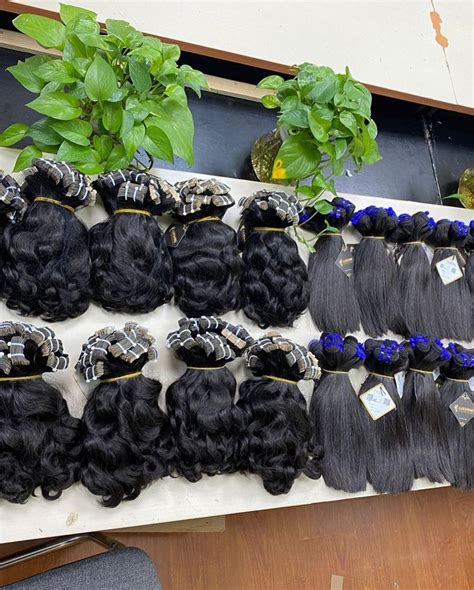Introduction
Wigs have become an increasingly popular solution for men seeking to enhance their appearance, conceal hair loss, or simply experiment with different styles. With a wide range of options available, choosing the right wig can be overwhelming. This comprehensive guide will explore the 7 essential types of wigs for men, providing detailed information on their characteristics, benefits, and suitability for different needs.

1. Polyurethane Wigs
- Characteristics: Made from a synthetic material that mimics the texture and feel of human hair, polyurethane wigs are durable, lightweight, and breathable.
-
Benefits:
- Natural appearance and feel
- Long lifespan (up to 5 years)
- Easy to maintain and style
- Suitability: Ideal for men with mild to moderate hair loss or those seeking a natural-looking wig for everyday wear.
2. Lace Front Wigs
- Characteristics: Feature a lace base around the perimeter of the wig, which gives the illusion of a natural scalp.
-
Benefits:
- Undetectable hairline
- Customizable styling options
- Breathable and comfortable
- Suitability: Suitable for men with extensive hair loss or those desiring a wig with a realistic appearance.
3. Full Lace Wigs
- Characteristics: Made entirely of lace, full lace wigs offer the most natural look and feel among all wig types.
-
Benefits:
- Virtually undetectable
- Allows for versatile styling
- Breathable and comfortable to wear
- Suitability: Ideal for men with complete hair loss or those seeking the most realistic wig experience.
4. Mono Part Wigs
- Characteristics: Combine a polyurethane base with a monofilament top, giving the illusion of hair growth from the scalp.
-
Benefits:
- Natural part and hairline
- Lightweight and breathable
- Durable and easy to maintain
- Suitability: Ideal for men with partial hair loss or frontal baldness seeking a realistic and affordable option.
5. Human Hair Wigs
- Characteristics: Made from 100% human hair, providing the most realistic look and feel.
-
Benefits:
- Natural appearance and texture
- Customizable styling options
- Long lifespan with proper care
- Suitability: Ideal for men who desire the most natural and authentic wig experience, regardless of their hair loss status.
6. Synthetic Wigs
- Characteristics: Made from synthetic fibers, synthetic wigs offer affordability and durability.
-
Benefits:
- Available in a wide range of colors and styles
- Less expensive than human hair wigs
- Easy to maintain and style
- Suitability: Suitable for men on a budget or those seeking a less realistic wig for occasional use or experimentation.
7. Toupees
- Characteristics: Small, partial wigs that cover specific areas of hair loss, such as the crown or frontal hairline.
-
Benefits:
- Conceals hair loss effectively
- Customizable sizing and color matching
- Lightweight and comfortable
- Suitability: Ideal for men with localized hair loss or those seeking a temporary solution to hair loss.
Types of Wigs Based on Cap Construction
In addition to the 7 essential types of wigs described above, wigs can also be categorized based on their cap construction:
| Cap Construction | Description |
|---|---|
| Capless Wig | A wig without a cap, offering maximum breathability but limited durability. |
| Weft Cap Wig | A wig with hair sewn onto horizontal strips of fabric, providing a secure and comfortable fit. |
| Mono Cap Wig | A wig with hair sewn onto a monofilament base, giving the illusion of hair growth from the scalp. |
| Lace Cap Wig | A wig with hair sewn onto a lace base, providing a natural and undetectable hairline. |
Factors to Consider When Choosing a Wig
When choosing a wig, several factors should be considered, including:
- Level of hair loss: The extent and location of hair loss will influence the type and size of wig required.
- Desired look: Consider the natural hair texture, color, and hairstyle to achieve the desired appearance.
- Comfort: Choose a wig that provides a comfortable and secure fit without causing irritation or discomfort.
- Lifestyle: The frequency and intensity of wig use will determine the durability and maintenance requirements of the wig chosen.
- Budget: Wigs vary widely in price, so determine a budget before beginning your search.
Q&A
1. How long do wigs last?
The lifespan of a wig depends on its type, cap construction, and maintenance. Polyurethane wigs can last up to 5 years, while synthetic wigs may last for 1-2 years.
2. Are wigs comfortable?
Modern wigs are designed to be comfortable and breathable, with adjustable straps and breathable caps.
3. Can I sleep in a wig?
Sleeping in a wig is not recommended as it can cause discomfort and damage the wig.
4. How often should I wash my wig?
The frequency of wig washing depends on the wig type and how often it is worn. Synthetic wigs can be washed less frequently (every 8-12 wears), while human hair wigs may require more frequent washing.
5. Can I style a wig?
Yes, most wigs can be styled using heat tools, but it is important to use low heat settings and avoid using harsh chemicals.
6. Where can I buy a wig?
Wigs can be purchased from hair salons, wig shops, and online retailers.
7. Is it noticeable that I am wearing a wig?
With proper fitting and maintenance, modern wigs can be virtually undetectable.
8. Are wigs expensive?
Wigs range in price from affordable synthetic options to high-end human hair wigs. The cost will vary depending on the type, quality, and cap construction of the wig.
Conclusion
Choosing the right wig can significantly enhance your appearance, boost your confidence, and help you feel your best. By understanding the different types of wigs available, considering your individual needs and preferences, and following the tips and recommendations outlined in this guide, you can find the perfect wig to meet your unique requirements. Embrace the transformative power of wigs and unlock a world of possibilities for your hair and style.
